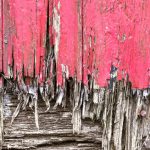What Is Dry Rot
Dry rot is a very serious problem that affects many homes across the UK. If found, experts like those at Orchard Preservations should be contacted immediately to prevent further structural damage to your home. This blog explains how to tell if you have it, how it’s caused, what it is and how to treat and prevent it in the future, so read on to find out.
How Is It Caused?
Serpula Lacrymans – or dry rot as it is more commonly known, is the most serious form of fungal decay. It attacks the timber in buildings, digesting the parts of the wood that gives it strength. What makes it so destructive is that it can spread without any source of moisture because it is able to generate it though the digestion of timber. Once it spreads, it can severely damage the structural integrity of the building.
This fungus can be caused by a number of elements. The moisture in the timber that allows for rot to develop is usually the result of a building fault of some sort. Dry rot can therefore be caused by the following:
- Leaking gutters & downpipes
- Penetrating damp
- Poor ventilation
- Rising damp
How To Tell If You Have Dry Rot
Dry rot is distinctive compared to other rots and has a few key characteristics.
– Mycelium growth. This type of growth is a fine & fluffy cotton wool like substance, normally growing among the timber and appears to be like a cobweb.
– The smell is also a key indicator that you have rot among your timber. The smell varies according to the amount of wood effected; however dry rot has common smell characteristics such as an earthy odour, mushroom-like smell and a general musty & damp smell.
– The look of the timber is the most obvious giveaway, as it may show a distinctive type of cracking known as cuboidal cracking. The timber cracks in small square-like portions that is caused by the fungus feeding on the wood’s natural moisture.
There is often much confusion surrounding the differences in dry rot & wet rot, as they both have similarities but require different treatment. It is important that an inspection from specialists is made as soon as possible to correctly identify the outbreak of the rotting, as well as a strategy for safe removal.
The main difference between wet rot and dry is that wet rot occurs more on a regular basis than dry and is less destructive as it stays confined to the wet area, but is still serious nevertheless. Wet rot needs a high moisture content of around 50% for the rot fungus to be present while dry only needs moisture of 20%. If wet rot is left untreated it can cause serious structural problems to your building’s integrity.
How To Treat And Prevent Dry Rot
Dry rot can cause serious damages to your house’s property value as well as the health of elderly and infants or those with respiratory conditions. It is vital that if rot is identified, specialists are contact ASAP.
The most important part of treating it is to first find the sources of the moisture and fix the fault. There can be steps that can be undertaken by the property owner to reduce the risk, such as installing underfloor ventilation. This will remove the stale moist air from the property and therefore eliminating the food source for the fungi.
Then you need to determine the full extent of the rot outbreak. In order to do this, you should open up the affected area by removing plaster and render in all directions as well as removing flooring and lifting floorboards.
The bulk of treating and preventing it lies with specialists, as they replace the timber and remove any potential risks in the future.
Dry Rot Specialist Devon
If you require dry rot specialists in Devon and need the problem treated effectively, contact a qualified surveyor such as Orchard Preservations. Having a thorough survey carried out by experienced professionals can ensure that your home refrains from integral damage, whilst receiving expert advice on how to deal with and prevent problem in the future.
Contact us today.



